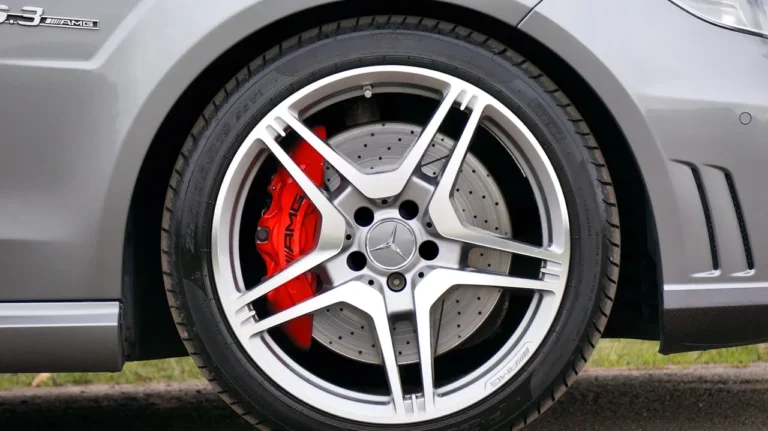
Latin America & Caribbean Automotive Tire Market Forecast to 2033: Growth Trends, Competitive Landscape, and Key Insights
Latin America & Caribbean Automotive Tire Market Size and Share Analysis – Growth Trends and Forecast Report 2025–2033.” This in-depth report provides an analytical overview of a market that is poised for steady growth, driven by rising vehicle ownership, expanding transportation infrastructure, and increasing consumer preference for fuel-efficient and durable tires.
The Latin America & Caribbean automotive tire market was valued at USD 4.08 billion in 2024 and is projected to reach USD 5.56 billion by 2033, growing at a compound annual growth rate (CAGR) of 3.51% over the forecast period. The report explores both the original equipment manufacturer (OEM) and aftermarket segments, with detailed breakdowns by vehicle type, rim size, sales channel, and country.
Market Overview and Key Trends
Across Latin America and the Caribbean, the automotive tire market is witnessing growth as a result of increasing motorization and improving road networks. From densely populated urban centers to remote rural regions, tires play a crucial role in facilitating daily commutes, commercial transportation, and leisure travel. The growing middle class, expansion of ride-sharing services, and higher disposable incomes are major contributors to increasing automotive ownership throughout the region.
Tourism continues to flourish, particularly in Caribbean nations, boosting demand for rental and fleet vehicles—and in turn, replacement tires. Consumers are also becoming more discerning, favoring all-terrain tires, eco-friendly options, and low rolling resistance tires that promise greater fuel efficiency and reduced environmental impact.
Key Market Drivers
1. Rising Vehicle Ownership and Fleet Expansion
The primary driver of tire market growth is the steady increase in vehicle ownership across the region. Urbanization, coupled with rising consumer purchasing power and supportive government policies, has accelerated new car sales in major economies such as Brazil, Mexico, and Argentina. In 2023, according to the International Organization of Motor Vehicle Manufacturers (OICA), Latin America saw a 7.65% year-over-year increase in new vehicle registrations, totaling 5.35 million units. Brazil and Mexico accounted for nearly 70% of that figure, with 2.30 million and 1.41 million vehicles registered, respectively.
This trend fuels demand for both OEM tires fitted on new vehicles and replacement tires required for maintenance and repairs. The growth of the used car market also contributes to rising tire consumption, especially in regions where affordability plays a critical role in consumer decisions.
2. Digitalization and E-commerce Expansion in Tire Retail
The growing penetration of e-commerce and digital platforms has transformed how tires are marketed, sold, and delivered. Consumers increasingly prefer purchasing tires online, drawn by convenience, a wide variety of options, and competitive pricing. This shift has compelled tire manufacturers, retailers, and distributors to strengthen their digital infrastructure, invest in omnichannel retail strategies, and improve last-mile logistics.
A noteworthy development occurred in November 2022, when L Catterton, a leading consumer-focused private equity firm, announced an investment in CantuStore, Brazil’s largest omnichannel aftermarket tire retailer. This strategic move highlights the growing importance of digital retailing and aftermarket services across the region.
3. Demand for High-Performance and Fuel-Efficient Tires
Rising fuel prices and difficult terrain across Latin America and the Caribbean are prompting consumers to seek tires that offer superior performance, durability, and fuel efficiency. From mountainous roads in Colombia to coastal routes in the Caribbean islands, tires must be capable of handling diverse driving conditions. As a result, there is growing interest in low rolling resistance tires, all-terrain models, and green tire technologies that enhance mileage and reduce carbon emissions.
The Latin Auto Parts Expo & Latin American Caribbean Tyre Expo, held in Panama in August 2024, showcased some of the latest innovations in tire technology. Prinx Chengshan, among other exhibitors, introduced its high-performance brands—including Prinx, Chengshan, Austone, and Fortune—with a strong focus on sustainability, reliability, and regional customization.
Market Challenges
1. Macroeconomic Instability and Exchange Rate Volatility
Economic uncertainty remains a significant barrier to sustained growth. Countries such as Argentina and Venezuela face high inflation, currency devaluation, and political instability—factors that negatively impact both manufacturers and consumers. Fluctuations in foreign exchange rates can raise the cost of imported tires and raw materials, forcing consumers to delay purchases or opt for cheaper, lower-quality products.
This environment also limits the profitability of premium tire manufacturers operating in the region, as pricing becomes increasingly difficult to stabilize amidst ongoing fiscal volatility.
2. Heavy Reliance on Imports and Limited Domestic Production
The region’s dependence on imported tires—especially in the premium, electric vehicle (EV), and run-flat categories—adds complexity to the supply chain. With relatively low domestic manufacturing capacity, many countries face long lead times, higher shipping costs, and exposure to global supply disruptions.
Island nations such as Cuba, Haiti, and the Dominican Republic are particularly affected by logistical challenges and high import duties, which restrict market access to innovative tire solutions. The lack of local production also limits the diversity of products available to consumers and curbs regional innovation.
Competitive Landscape: Key Players and Strategies
The report provides detailed analysis of major tire manufacturers operating in the Latin America & Caribbean region, including their business strategies, product portfolios, and recent developments. These players are focused on innovation, expanding regional footprints, and enhancing customer engagement through omnichannel platforms.
Key Companies Profiled:
- Hankook Tire & Technology Co., Ltd.
- Continental AG
- Michelin
- Pirelli Tyre C. S.p.A. (subsidiary of China National Chemical Corporation)
- The Yokohama Rubber Co., Ltd.
- Bridgestone Corporation
These companies are investing in R&D to develop region-specific tire models that meet local road and climate conditions, while also adhering to global environmental and safety standards.
Market Segmentation
By Vehicle Type:
- Passenger Vehicles
- Commercial Vehicles
- Electric Vehicles
By Rim Size:
- Less than 15 Inches
- 15 to 20 Inches
- More than 20 Inches
By Sales Channel:
- OEM (Original Equipment Manufacturer)
- Aftermarket
By Country:
- Brazil
- Mexico
- Argentina
- Cuba
- Haiti
- Dominican Republic
- Guatemala
- Bahamas
- Panama
- Rest of Latin America & Caribbean
Strategic Insights and Analytical Tools
The report incorporates robust analytical frameworks to evaluate the market environment and competitive dynamics:
- Porter’s Five Forces Analysis
- Bargaining power of buyers and suppliers
- Threat of substitutes and new entrants
- Intensity of competition
- SWOT Analysis
- Identifying strengths, weaknesses, opportunities, and threats for stakeholders
These tools help businesses and investors navigate market challenges, seize emerging opportunities, and formulate effective strategies
The Latin America & Caribbean Automotive Tire Market is on a steady path of growth, buoyed by rising vehicle ownership, digital innovation in retail, and the need for fuel-efficient and all-terrain tires. While economic challenges and import dependence pose hurdles, investments in infrastructure, technology, and e-commerce are reshaping the market’s future.
With major manufacturers strengthening their presence and consumer expectations evolving, the region is expected to emerge as a dynamic and increasingly competitive hub for tire production, distribution, and innovation through 2033.







